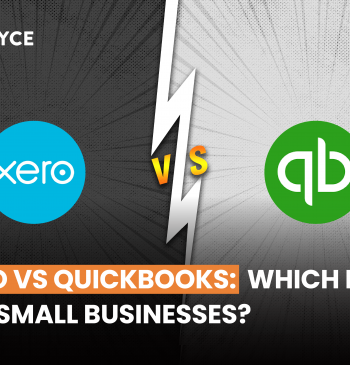08 Dec

Accounting software can be a useful tool for businesses looking to manage their inventory more efficiently. Smart inventory management is key to success in any business.
In this article, you will learn tips for managing inventory along with instructions on how to use accounting software for inventory management. These instructions cover things like selecting the appropriate software, accurately setting up inventory items, utilizing capabilities for inventory monitoring, regularly reconciling inventory, and utilizing inventory reporting
Table of Contents
What is Inventory Management?
Inventory management is the process of tracking, controlling, and optimizing the ordering, storing, and using of components, raw materials, and finished goods that a business needs to create a product or service. It ensures that businesses have the right amount of inventory at the right time to meet customer demand and maximize profitability.
Inventory management Methods
Inventory management methods are the techniques and procedures built into the software in order to efficiently monitor, manage, and maximize a business’s inventory. Various accounting software programs may have a variety of features and capabilities to support various accounting functions. Here are the methods accounting software uses to handle inventories.
Just In Time Management
JIT is a method where inventory is ordered and received right as it is needed. This reduces costs and storage space. Accounting software can help with JIT by tracking inventory in real-time and automatically reordering when needed.
First In First Out (FIFO)
FIFO is a way to use or sell the oldest items first. Accounting software uses this method to make sure the cost of goods sold is based on the cost of the oldest items in stock.
Last In First Out (LIFO)
LIFO is the opposite of FIFO .In LIFO (Last In, First Out), the most recently acquired inventory is used or sold first. It’s not as widely used as FIFO (First In, First Out) and can have unique tax consequences
Weighted Average Costing
Weighted Average Costing is a way to calculate the cost of sold items by averaging the cost of all items in stock.Since it does not give preference to new or old things, this strategy is more fair than others.
Accounting software can help businesses use WAC to get a more accurate picture of their costs and inventory value
Economic Order Quantity (EOQ)
Economic order quantity (EOQ) is a model used to calculate the ideal order size for a company. It takes into account the cost of holding inventory and the cost of setting up new orders. Economic Order QuantityEOQ helps companies minimize their total inventory costs.
Perpetual inventory System
Track inventory in real-time for accurate financial reports ideal for businesses monitoring stock levels regularly. This method provides real-time information on inventory level as it is updated with each purchase, sale, and return
Tips for Managing Inventory with Accounting Software.
Using accounting software for inventory management is helpful, but using it the right way is crucial. Here are some simple tips to make the most of it.
Choose the right accounting software.
Every accounting software provides a different set of features and functionality, so it’s important to choose a package that has the features and functions you need to manage your inventory effectively.
Set up your inventory items correctly.
Once you have chosen accounting software, you need to set up your inventory items correctly. This includes entering the name, description, barcode (if applicable), cost, selling price, quantity on hand, and reorder point for each item. You should also categorize your inventory items so that you can easily track and manage them.
Use inventory tracking features.
Track your inventory in real-time with accounting software to avoid shortages or excess stock.You can use barcode scanners or cycle counting to keep an eye on inventory levels.
Reconcile your inventory regularly.
It is important to reconcile your inventory regularly to ensure that your accounting software records are accurate. This involves physically counting your inventory and comparing the results to your accounting software records. You should reconcile your inventory on a regular basis, such as once a week or once a month.
Use inventory reports
Accounting software offers various reports on costs, sales, and inventory, aiding informed business decisions. Common inventory reports include turnover, valuation, stockouts, and sales reports. These assist in stocking decisions and order management.
Conclusion
Inventory management is crucial for businesses to succeed. Accounting software can help businesses manage inventory more efficiently and effectively, leading to increased profits and customer satisfaction.
Shabana has been a committed content writer and strategist for over a 5 years. With a focus on SaaS products, she excels in crafting compelling and informative content.
Related Post
Copyright © 2024 – Powered by uConnect



Shabana